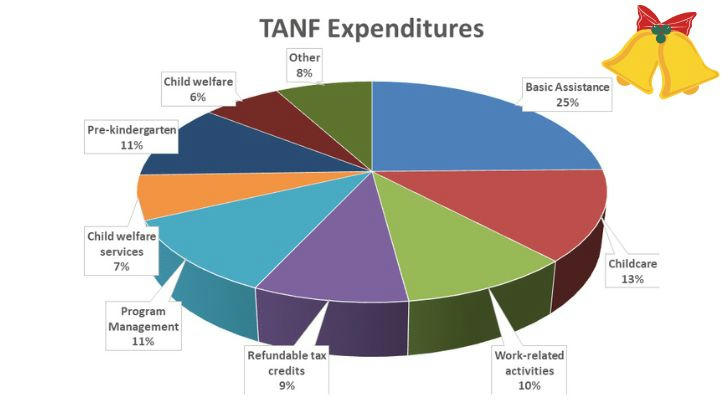Need Help? Discover How TANF Can Support Your Family's Journey
In a world where financial stability can feel out of reach, the Temporary Assistance for Needy Families (TANF) program stands as a beacon of hope for low-income families across the United States. Established to provide essential support, TANF is more than just a financial lifeline; it’s a pathway to self-sufficiency and a brighter future. This article explores the benefits, subsidy amounts, and the unique features of TANF, empowering families to take advantage of the resources available to them.

What is TANF?
Temporary Assistance for Needy Families (TANF) is a federally funded, state-run program. Also known as welfare, TANF helps families financially after experiencing hardship. Recipients may qualify for help with:
- Food
- Housing
- Home energy
- Child care
- Job training
Each state or tribal government runs its TANF program differently and has a different name.
Financial Assistance: What to Expect
One of the most significant aspects of TANF is the financial assistance it offers. The amount of cash support varies by state, reflecting local economic conditions and policy decisions.
Monthly Cash Benefits: As of 2023, the median TANF benefit level is approximately $492 per month. However, this amount can differ widely. For example, a family of three may receive as little as $268 in Mississippi or as much as $2,359 in California. Understanding these variations is crucial for families seeking assistance.
Asset Limits and Income Eligibility: States set asset limits for TANF eligibility, typically ranging from $1,000 to $15,000. Some states have no asset limits, allowing families to save more while receiving assistance. Additionally, income eligibility thresholds vary, with many states requiring families to demonstrate that their income falls below a certain percentage of the federal poverty level.
Comprehensive Support Services
TANF is not just about cash assistance; it encompasses a wide range of support services designed to help families achieve long-term stability.
- Flexibility in Spending: TANF cash benefits can be used for various essential needs, including food, housing, and childcare. This flexibility allows families to allocate resources according to their most pressing needs, ensuring they can cover basic expenses.
- Job Training and Education: Many TANF programs offer job training and educational opportunities to help families gain the skills necessary for employment. Workshops, vocational training, and job readiness programs empower participants to improve their employability and secure better job prospects.
- Childcare Assistance: Recognizing the importance of childcare for working parents, TANF provides support for childcare expenses. This assistance enables parents to pursue employment or education while ensuring their children are cared for in a safe environment.
- Help with Basic Needs: TANF recipients may also qualify for assistance with food, housing, home energy costs, and other essential services. This comprehensive support helps families manage their day-to-day expenses and provides a safety net during challenging times.
Encouraging Self-Sufficiency
TANF is designed to promote self-sufficiency and reduce dependency on government assistance. To achieve this, the program includes several key features:
- Work Participation Requirements: TANF encourages participants to engage in work-related activities, with states required to meet a minimum work participation rate of 50%. This can include job training, education, and community service, helping families transition to self-sufficiency.
- Lifetime Limits: While TANF provides essential support, benefits are generally limited to a maximum of 60 months (5 years) over a lifetime. Some states impose shorter limits, encouraging families to work towards independence while ensuring that assistance is available for those who need it most.
- Emergency Assistance: In times of crisis, some states offer emergency supplemental payments to families facing immediate financial challenges. This additional support can help stabilize a family's situation and provide critical relief during difficult times.

specific examples
1. California: CalWORKs
- Program Name: California Work Opportunity and Responsibility to Kids (CalWORKs)
- Monthly Cash Assistance: A family of three can receive up to $1,000 per month, depending on their income and specific circumstances.
- Additional Benefits: CalWORKs provides access to job training programs, childcare assistance, and housing support. Participants can also receive help with transportation costs to attend job interviews or training sessions.
2. New York: Family Assistance
- Program Name: New York State Family Assistance
- Monthly Cash Assistance: A family of three can receive up to $789 per month, depending on their needs and local cost of living.
- Comprehensive Support: New York’s program includes access to childcare subsidies, job training programs, and educational opportunities. Families can also receive emergency assistance for housing and utility bills.
State Variability: Tailored Support
One of the unique features of TANF is its variability across states. Each state has the authority to design its TANF program, leading to significant differences in benefits and eligibility criteria.
State-Specific Programs: For instance, California offers a more generous benefit structure compared to states like Mississippi. This variability can significantly impact the quality of life for families, making it essential for individuals to understand the specific benefits available in their state.
Educational Support: Some states, like Maine, utilize TANF funds to support educational programs for families, enhancing their ability to pursue higher education and improve their long-term economic prospects.
Conclusion: A Pathway to a Brighter Future
The Temporary Assistance for Needy Families (TANF) program is a vital resource for low-income families seeking financial stability and self-sufficiency. By providing cash assistance, support services, and opportunities for education and job training, TANF empowers families to overcome challenges and build a better future.
If you or someone you know is struggling to make ends meet, exploring TANF for cash assistance.
